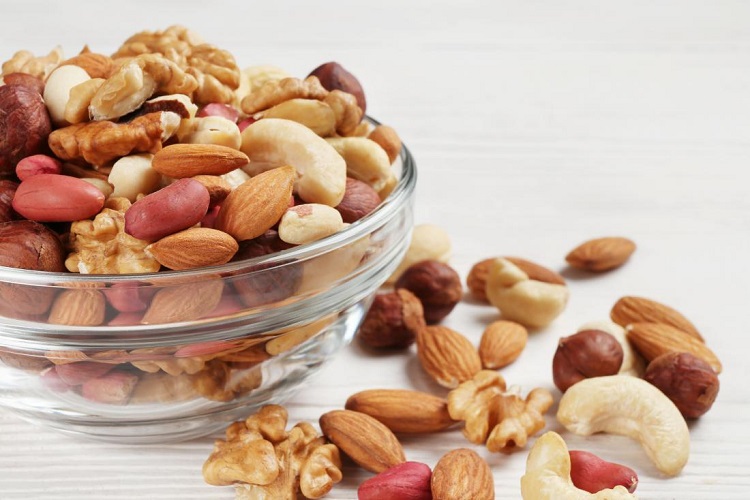An entirely functional food industry is a necessity of every modern economy. Such an industry not only sustains countless jobs but also keeps on producing food to fill our plates.
If the cogs turning stops, the feeding stops, it’s as simple as that.
The food industry survives despite the countless challenges that hinder its functioning. This labor-intensive industry often suffers from labor shortages due to frequent wage issues, leaving the industry with more products than it can pack. This leads to food being wasted, so is time and money.
For most of us, electric cars, drones, and IoTs are the definitions of modern advances in technology. But hidden from our eyes, the food industry is revolutionizing picking, packing, and producing food through innovative technological transitions.
In this article, we get acquainted with some of the greatest and most recent innovations within the food industry. These technological advances are automating manual processes, improving efficiency, and making work environments safer in the process.
Robots With Advanced Sensory Systems
An article by CIO review has highlighted an impactful step forward for the food industry. The site explains in detail how advanced sensory systems boost productivity, and enhance quality and stability.
Robots equipped with advanced sensory systems are taking on roles of detecting odors, identifying contaminants and pathogens, and sampling food with human-style taste buds and e-noses.
These advanced robots are advanced beyond your imagination as they can grade products, evaluate ingredients, and identify foreign contaminants, to name a few.
The utilization of such sophisticated technology has made it possible to reduce human error, improve efficiency, and maintain an exceptionally high level of quality which is quintessential for the flourishing of the food industry in 2020 and beyond.
Fusion Tech Machinery
Fusion Tech is one of the leading technological innovators in the food processing industry. In their latest advancement, Fusion Tech unveiled a machine unit that aims to increase worker’s and products’ efficiency and safety. It’s a boon with endless intangible benefits for businesses.
“In order to do what our machine can do in an hour, they would have to hire five or six people to even get close to what the machine could do,” says Jason, the marketing director for Fusion Tech.
Worker safety has been an ongoing concern in the meat processing industry. Fusion Tech’s new machine features a safety cover that cuts power to the machine-operated knife blades when lifted. Thus, the transition towards automated systems is going to be a positive one. Similarly, CM Process Solutions has been a driving force in providing state-of-the-art equipment and solutions for the food processing industry, making operations streamlined and efficient.
Using Display Counters For Appealing Presentation
Food is a multi-sensory experience. We enjoy the smell of the ingredients, the way it looks, how it feels on our fingers and the way it tastes. When it comes to the commercial food industry, how the food looks is one of the most influential factors in promoting the sales of food items. Well-renowned chefs are known more for their presentation of food than the actual taste.
Hotels, Restaurants, and Bakeries make use of shiny food display counters that display food convincingly and appealingly.
Over the years, Food Display Counters have also undergone numerous technological innovations in cooling, lighting, and storage space.
Why get a Display Counter for shop price when you can get it for a significantly discounted price at Sujata Enterprises, the best display counter manufacturer in the city of Mumbai?
Soft Robotic Grippers
The robotics industry has always faced challenges such as differences in sizes and shapes of objects, volatility, and strict regulatory restrictions. The year 2019 saw the launch of the FDA-approved soft robotic gripper (“mGrip”) from Soft Robotics.
The mGrip can accurately locate and pick a product from a bin without damaging or bruising it.
Furthermore, it requires no feedback or force-sensing systems. It uses 3D area sensing to locate and grab a product irrespective of its orientation and then accurately places it into the packaging. Whether it is the final product, bread, or supplements, the mGrip carries out each task with utmost perfection.
Robotic Ingredient Handling Systems
Manual ingredient weighing consumes a lot of time and is thus, costly. Surprisingly enough, these manual processes cost a bakery and similar businesses up to 1 percent of their turnover.
The OAL Group finally provided a foolproof solution to this juxtaposition in 2019.
They came up with a robotic ingredient handling system that automatically and accurately weighs food ingredients identical to a weighing scale.
This technology works by pouring elements stored within a central cell; from there, these robots manage the inventory as they weigh out ingredients for each recipe accurately before placing the items at a designated collection station.
Such ingredient handling systems are bound to ensure accurate weighing, boost productivity, and improve traceability naturally.
Smoothie Making Robots
All the innovations we’ve read about until now were either about business-to-business food testing or about picking and packaging.
So are there any innovations where the food is directly transferred from a robot to a consumer?
Blendid took the automation world by storm in 2019 when it released its second fully autonomous food vending machine entirely operated by robots. The Robotic kiosk has the ability to churn out nine smoothies simultaneously and can pump out 45 drinks per hour. On top of it all, it makes custom-blended smoothies to order! You can place the order via a mobile app or tablet, and the smoothie will be ready in under two minutes. One has to see it to believe in this wonderful and futuristic innovation truly.
The only human interaction required is for managing the inventory; other than that, the kiosk uses a combination of artificial intelligence, machine learning, and robotics to deliver consistent tasting smoothies to customers on demand.
It can’t get better than this, can it? It does!
Based on a customer’s feedback, the Blendid Robot tracks the ingredients of each smoothie and adjusts the recipe according to his/her personal preference. Talk about uber-smart!
These robots cost about $70,000 and are built to occupy supermarkets, stadiums, and cafeterias primarily.
What innovations would you like to see in the food processing industry?







